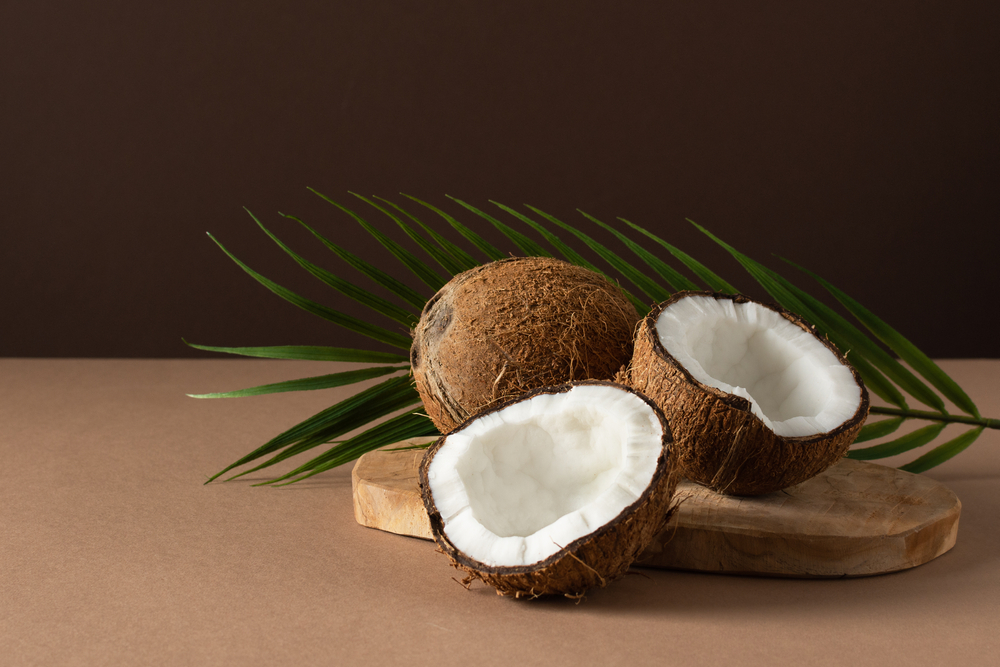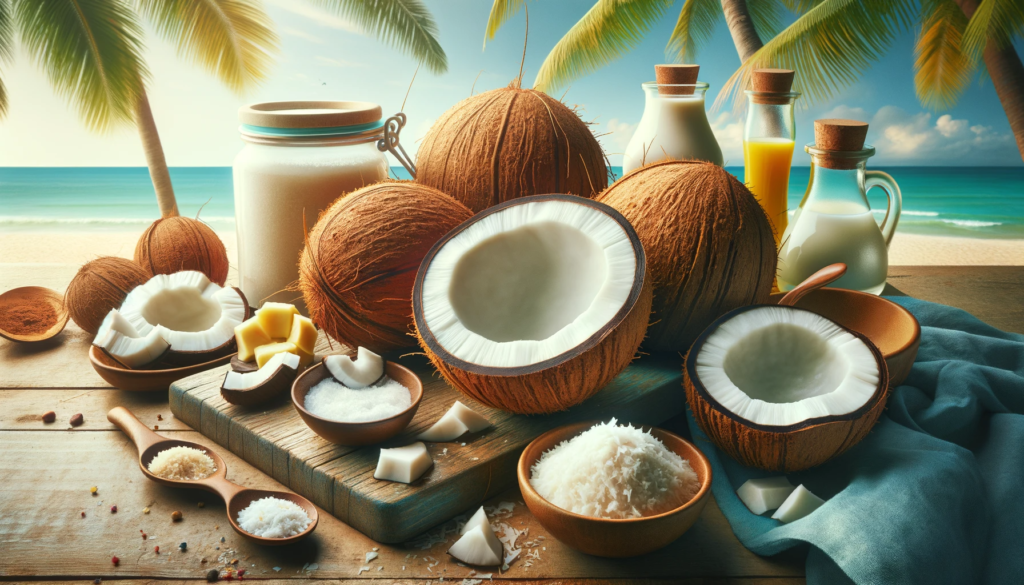Introduction to Niu (Coconut)
Understanding the Integral Role of Coconut in Tropical Diets
Niu, commonly known as coconut, has long been esteemed as a staple in tropical diets, with its presence being almost ubiquitous across the equatorial belt. This multi-faceted drupe offers a wealth of nutrients and has sustained populations with its bountiful resources. Island communities hold the coconut in high regard; its versatility and nutritional value cannot be overstated. From providing a hydrating drink in coconut water to edible flesh rich in fiber, the coconut is a complete food source. Moreover, it yields coconut milk and oil, incorporated in numerous local dishes. The ease of integrating this fruit into daily consumptions and its year-round availability firmly establishes niu’s role as an integral part of tropical diets.
The Nutritional Benefits of Coconut
Health Advantages and Nutritional Components of Coconuts
Coconuts harbor a myriad of health benefits attributable to their rich nutrient profile. Loaded with essential vitamins and minerals such as potassium, magnesium, and vitamin C, they support various facets of health from immune function to electrolyte balance. The flesh of the coconut is laden with dietary fibers that aid in digestion and satiety, while its oil is celebrated for medium-chain triglycerides (MCTs), known for bolstering metabolism and energy levels. Additionally, coconut’s lauric acid content has antimicrobial properties, hinting at its potential wellness benefits. With these nutritional components, coconuts are delicious and a potent superfood that can contribute positively to one’s health.

Culinary Uses of Coconut
Versatility in Cooking – From Coconut Milk to Oil
Coconut’s culinary uses are diverse and dynamic, making it a prized ingredient in many kitchens around the globe. Coconut milk, extracted from the grated meat of mature coconuts, is a creamy and rich liquid that forms the base of countless sauces, soups, and curries, imparting a distinct flavor and texture. Meanwhile, coconut oil, derived from the flesh, is a staple in frying and baking due to its high smoke point and unique taste profile. Even the shredded coconut flesh is a versatile add-on, used to garnish desserts or as a texture enhancer in dishes. This ability to take many forms in cooking – liquid, solid, or oil – underscores coconut’s versatility and utility in the culinary world.
Traditional and Modern Recipes Using Different Parts of the Coconut
Coconut’s adaptability is celebrated both in time-honored traditions and in modern cuisine. Traditional recipes often highlight the simplicity of coconut, such as the Pacific Islands’ ‘Poisson Cru,’ where coconut milk complements fresh fish, or South Asia’s ‘Kaya,’ a jam made from coconut milk, eggs, and sugar. In contemporary culinary practices, coconut finds its place in innovative dishes like coconut-crusted shrimp, vegan coconut ‘bacon,’ or even as a dairy alternative in lattes and desserts. Each part of the coconut, be it the milk, the flesh, or the oil, can be woven into recipes ranging from the classically comforting to the daringly novel.
Coconut in Traditional Pacific Cuisine
The Cultural Significance of Coconut in Island Cooking
In the culinary landscape of the Pacific, coconut is more than just an ingredient; it’s a cultural cornerstone. Traditional Pacific cuisine uses coconut extensively, recognizing its value and significance in their food heritage. Celebrations and communal feasts often showcase dishes where coconut plays the star role, symbolizing abundance and community ties. In many island cultures, the act of sharing a meal prepared with coconut is a gesture of hospitality and unity. This ingrained cultural significance has ensured that coconut remains a treasured and integral part of island culinary practices and traditions, transcending generations.
Classic Pacific Dishes Featuring Coconut
Coconut is the star in many classic Pacific dishes that are both delectable and emblematic of the region’s gastronomy. ‘Lū‘au’, a traditional Hawaiian dish, features taro leaves cooked in coconut milk, illustrating the harmonious blend of local ingredients. In Fiji, ‘Kokoda’ consists of fish marinated in lemon and coconut milk, mirroring the island’s pristine ocean bounty. And let’s not forget ‘Haupia’, a Hawaiian dessert where coconut milk is the key ingredient in creating its pudding-like texture. Each dish represents the rich tapestry of Pacific Island cuisine, with the niu (coconut) bringing its distinct taste and culinary character.
The Many Forms of Coconut in Cooking
Exploring Coconut Milk, Water, Oil, and Flesh
Exploring its various forms, coconut is indeed a chameleon in the culinary world. Coconut milk provides creaminess and a nutty flavor to dishes, acting as a dairy alternative for vegan diets. On the other hand, coconut water is a refreshing and natural hydrating drink, packed with electrolytes and often consumed straight from the fruit. Meanwhile, coconut oil is a favorite in baking and stir-frying, prized for its health benefits and tropical essence. Lastly, the coconut flesh or ‘meat’ can be eaten fresh, dried into flakes or chips, and used in both sweet and savory recipes, showcasing coconut’s culinary diversity.
Creative Culinary Innovations with Coconut
The world of gastronomy continually embraces coconut, finding new and innovative ways to incorporate its flavors and textures. Chefs and home cooks experiment with coconut flour in gluten-free baking, giving rise to many pastries and bread that cater to dietary restrictions. Coconut sugar, another by-product, is considered a more natural sweetener, offering a lower glycemic index option. Moreover, the rise of plant-based diets has bolstered the popularity of coconut-based yogurts and cheeses, reflecting coconut’s remarkable adaptability and its growing relevance in culinary innovation.

Beyond Food: Other Uses of Coconut
Coconut’s Applications in Non-Culinary Contexts
While coconuts are renowned for their culinary uses, their applications extend into numerous non-culinary contexts. The versatility of coconut can be seen in the beauty industry, where coconut oil has become a staple for skin and hair care, lauded for its moisturizing and nourishing properties. In sustainable living, coconut husks are transformed into eco-friendly pots and brushes, showcasing the fruit’s potential beyond gastronomy. Even in the realm of health, coconut charcoal is used for its detoxifying effects. Thus, coconuts provide myriad benefits and practical uses that transcend the boundaries of the kitchen.
Sustainable Aspects of Coconut Cultivation
The Environmental Impact and Sustainability of Coconut Farming
Coconut farming embodies sustainability principles, with the coconut palm being a relatively low-maintenance crop with a high yield per hectare. The tree’s ability to grow in diverse tropical environments without the need for intensive agricultural practices makes it an environmentally friendly option. Furthermore, coconuts can support local economies by fostering small-scale farming practices and providing a continuous source of income, as the trees produce fruit for up to 60 years. Farmers also use every part of the coconut tree, minimizing waste and maximizing resources, aligning with eco-conscious practices and contributing to the sustainability of coconut cultivation.
FAQs About Using Coconut in Cooking
What is the Difference Between Coconut Milk and Coconut Cream?
The primary difference between coconut milk and coconut cream is their consistency and fat content. Coconut milk is a thinner, more liquid substance made by soaking shredded coconut meat in water and then straining the mixture. It is commonly used in soups and sauces. Coconut cream, on the other hand, is thicker and richer, containing less water and more coconut fat. It is the result of simmering four parts shredded coconut in one part water. Coconut cream is often used in desserts and thicker sauces. Both can impart a creamy, tropical flavor to dishes but are used differently depending on the desired texture of the recipe.
How Can I Substitute Coconut Products in Recipes?
Understanding their role in the dish is crucial to substitute coconut products in recipes. A common dairy-free alternative for coconut milk is almond or soy milk, which can mimic the lightness and moisture content. Heavy cream or full-fat yogurt can serve as a substitute if a recipe calls for coconut cream, though the unique coconut flavor will be absent. When it comes to coconut oil, butter or other vegetable oils can often be used in its place for baking and cooking. Each substitution should be considered based on the flavor profile and consistency you aim to achieve in your recipe.
What Are the Best Storage Methods for Coconut Products?
Proper storage is vital to preserving the freshness and flavor of coconut products. For coconut oil, store it in a cool, dark place, and it can last up to two years. Coconut milk and cream should be stored in the refrigerator if opened and used within a few days; unopened cans or cartons can be kept in the pantry. Shredded coconut or coconut flakes will stay fresh for several months when stored in an airtight container in a cool, dry place; for longer storage, they can be refrigerated or frozen. Separation in coconut milk and cream is natural when refrigerated; simply shake or stir before use.
Can You Differentiate Between Young and Mature Coconuts?
Young and mature coconuts differ significantly in their characteristics and culinary uses. Young coconuts, often identified by their green outer shell, contain more water and have a softer, jelly-like flesh. This water is sweet and high in electrolytes, making it a refreshing drink, while the tender meat can be eaten with a spoon and is great in desserts. Mature coconuts have a brown, hairy shell with firmer meat and less water. The meat of mature coconuts is ideal for grating and using in cooking, as it imparts a more intense coconut flavor and texture to dishes.
What Are the Health Benefits of Using Coconut in Cooking?
Using coconut in cooking offers several health benefits. Coconut oil contains medium-chain fatty acids that the body can easily burn for energy. It also has antimicrobial properties due to its lauric acid content. Coconut meat is high in fiber, aiding digestion and giving a feeling of fullness. The coconut water is rich in potassium and other electrolytes, making it excellent for hydration. However, because coconut products can also be high in saturated fats, consuming them in moderation and as part of a balanced diet is advisable.
Join us on a gastronomic journey to explore the indigenous ingredients in Oceania that are the cornerstone of its vibrant cuisine.
